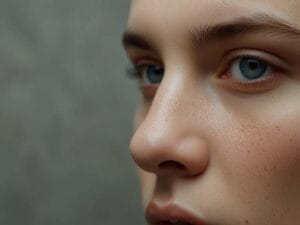Rhinoplasty for Deviated Septum: What You Need to Know
Imagine waking up every morning with one nostril completely blocked, struggling to breathe even when you’re just sitting still. That’s the reality for millions of people living with a deviated septum—a condition where the thin wall between your nasal passages is shifted to one side. While many people discover they have a deviated septum during a routine checkup, others experience significant breathing problems, chronic sinus infections, or even sleep apnea. When conservative treatments fail, rhinoplasty for deviated septum becomes a viable solution that addresses both functional breathing issues and aesthetic concerns.
Here’s the thing: not all deviated septums require surgery. Some people live their entire lives without knowing their septum is slightly off-center. But when symptoms interfere with daily life—when you can’t sleep through the night, when exercise becomes impossible, when you’re constantly reaching for nasal sprays—that’s when rhinoplasty for deviated septum enters the conversation. This procedure, often called septorhinoplasty when combined with cosmetic changes, can dramatically improve both breathing function and nasal appearance.
Understanding Deviated Septum and Rhinoplasty
Your nasal septum is that thin piece of cartilage and bone that divides your nose into two separate passages. In an ideal world, it sits perfectly centered. But here’s where things get interesting: studies suggest that up to 80% of people have some degree of septal deviation, though most never experience symptoms. The deviation can be congenital—meaning you were born with it—or it can develop from trauma, like a broken nose during childhood sports or an accident.
When we talk about rhinoplasty for deviated septum, we’re actually discussing two procedures that often go hand-in-hand. Septoplasty focuses purely on correcting the internal structure to improve breathing. Rhinoplasty, on the other hand, addresses the external appearance of the nose. Many patients discover that fixing the internal deviation also requires some external reshaping to maintain proper nasal function and aesthetics.
Deviated Septum Results
Imagine waking up every morning with one nostril completely blocked, struggling to breathe even when you’re just sitting still. That’s the reality for millions of people living with a deviated septum—a condition where the thin wall between your nasal passages is shifted to one side. While many people discover they have a deviated septum during a routine checkup, others experience significant breathing problems, chronic sinus infections, or even sleep apnea. When conservative treatments fail, rhinoplasty for deviated septum becomes a viable solution that addresses both functional breathing issues and aesthetic concerns.
Here’s the thing: not all deviated septums require surgery. Some people live their entire lives without knowing their septum is slightly off-center. But when symptoms interfere with daily life—when you can’t sleep through the night, when exercise becomes impossible, when you’re constantly reaching for nasal sprays—that’s when rhinoplasty for deviated septum enters the conversation. This procedure, often called septorhinoplasty when combined with cosmetic changes, can dramatically improve both breathing function and nasal appearance.
Deviated Septum
Your nasal septum is that thin piece of cartilage and bone that divides your nose into two separate passages. In an ideal world, it sits perfectly centered. But here’s where things get interesting: studies suggest that up to 80% of people have some degree of septal deviation, though most never experience symptoms. The deviation can be congenital—meaning you were born with it—or it can develop from trauma, like a broken nose during childhood sports or an accident.
When we talk about rhinoplasty for deviated septum, we’re actually discussing two procedures that often go hand-in-hand. Septoplasty focuses purely on correcting the internal structure to improve breathing. Rhinoplasty, on the other hand, addresses the external appearance of the nose. Many patients discover that fixing the internal deviation also requires some external reshaping to maintain proper nasal function and aesthetics.
Recovery and Results: What Happens After Rhinoplasty for Deviated Septum
Let me be honest about recovery—it’s not always comfortable, but it’s manageable. The first 48 hours after rhinoplasty for deviated septum are typically the most challenging. You’ll have nasal packing (soft gauze inside your nostrils) to control bleeding and support the newly positioned structures. Your nose will be swollen, and you might experience some bruising around your eyes—those classic “black eyes” you see in before-and-after photos.
Most patients can return to light activities within a week, but strenuous exercise and heavy lifting need to wait at least three to four weeks. The external splint comes off after about a week, revealing your new nasal shape—though it will still be quite swollen. This is where patience becomes crucial: while you’ll see immediate improvements in breathing once the packing is removed, the final aesthetic results take time to emerge.
The Timeline of Healing
Understanding the healing timeline helps manage expectations. Here’s what typically happens:
- Week 1-2: Initial swelling and bruising subside. Breathing improves significantly as internal swelling decreases. External splint removal reveals early shape changes.
- Month 1-3: Most visible swelling resolves. The nose shape becomes more defined, though subtle changes continue. You can resume most normal activities.
- Month 3-6: Refinement continues. The tip of the nose, which often swells longest, begins to show final definition. Breathing function stabilizes.
- Month 6-12: Final results emerge. Subtle changes may continue for up to a year, but the majority of healing is complete.
That’s what many patients find surprising—the nose continues to refine for months after surgery. The initial results you see at week two are just the beginning. The final shape, especially in the nasal tip area, can take a full year to settle into its permanent form.
Costs and Insurance Coverage for Rhinoplasty for Deviated Septum
Here’s where things get complicated. The cost of rhinoplasty for deviated septum varies dramatically based on several factors: geographic location, surgeon experience, facility fees, anesthesia costs, and whether you’re combining functional and cosmetic work. On average, you’re looking at anywhere from $5,000 to $15,000, though complex revisions can cost significantly more.
The insurance question is crucial. When rhinoplasty for deviated septum is performed primarily to correct breathing problems—when it’s medically necessary—insurance often covers at least part of the procedure. However, if the surgery is primarily cosmetic, you’ll likely pay out of pocket. Many patients find themselves in a gray area: they need functional correction but also want aesthetic improvements.
In these cases, insurance typically covers the septoplasty portion (the functional correction), while patients pay separately for the cosmetic rhinoplasty component. This is where clear communication with both your surgeon and insurance provider becomes essential. Get pre-authorization in writing before scheduling surgery to avoid unexpected bills.
| Cost Component | Typical Range | Insurance Coverage |
|---|---|---|
| Surgeon’s Fee | $3,000 – $8,000 | Partial (if medically necessary) |
| Anesthesia | $800 – $1,500 | Usually covered |
| Facility Fees | $1,000 – $3,000 | Usually covered |
| Cosmetic Rhinoplasty | $2,000 – $5,000 | Not covered |
Risks and Complications: What You Should Know
No surgery comes without risks, and rhinoplasty for deviated septum is no exception. While serious complications are rare when performed by an experienced surgeon, it’s important to understand what could go wrong. The most common issues include bleeding, infection, adverse reactions to anesthesia, and unsatisfactory aesthetic results.
Some patients experience temporary or permanent changes in sensation around the nose and upper lip. This usually resolves within months, but in rare cases, it can be permanent. There’s also a small risk of septal perforation—a hole developing in the septum—which can cause chronic nosebleeds, crusting, and whistling sounds when breathing.
Perhaps the most frustrating complication is when breathing doesn’t improve as expected, or when the deviation recurs. This can happen if the initial correction wasn’t thorough enough, or if scar tissue forms in a way that recreates the obstruction. Revision surgery is sometimes necessary, though it’s more complex and carries higher risks.
That said, when performed by a board-certified facial plastic surgeon or otolaryngologist with extensive experience in rhinoplasty for deviated septum, the complication rate is quite low. The key is choosing the right surgeon—someone who does these procedures regularly, not occasionally.
Choosing the Right Surgeon for Rhinoplasty for Deviated Septum
This aspect is often overlooked, but it’s arguably the most important decision you’ll make. Not all plastic surgeons specialize in nasal surgery, and not all ENT specialists focus on cosmetic outcomes. For rhinoplasty for deviated septum, you want someone who excels at both functional and aesthetic work.
Look for a surgeon who is board-certified in either facial plastic surgery or otolaryngology (ear, nose, and throat). Check their before-and-after galleries specifically for deviated septum cases—not just cosmetic rhinoplasties. Ask how many of these procedures they perform annually. You want someone who does this regularly, not as an occasional procedure.
During your consultation, pay attention to how the surgeon listens. Do they understand your concerns? Do they explain the procedure clear or do they show you realistic expectations, or do they promise perfect results? A good surgeon will discuss both the benefits and limitations of rhinoplasty for deviated septum honestly.
Also, don’t hesitate to get a second opinion. This is a significant decision, and different surgeons may have different approaches. What matters is finding someone whose approach aligns with your goals and whose results you trust.
Questions to Ask During Your Consultation
Come prepared with questions. Here are some that can help you evaluate whether a surgeon is right for you:
- How many rhinoplasty for deviated septum procedures do you perform each year?
- What’s your revision rate for this specific procedure?
- Can you show me before-and-after photos of patients with similar deviations?
- What approach do you recommend for my case, and why?
- What are the most common complications you’ve seen, and how do you handle them?
- Will insurance cover any portion of my procedure?
- What should I expect during recovery, and what support do you provide?
Alternative Treatments: When Surgery Isn’t the Answer
Before jumping into rhinoplasty for deviated septum, it’s worth exploring non-surgical options—especially if your symptoms are mild or intermittent. Many patients find relief through less invasive approaches, at least initially.
Nasal steroid sprays can reduce inflammation and swelling, sometimes opening airways enough to improve breathing without surgery. These work best when the deviation is mild and symptoms are primarily related to inflammation rather than pure structural blockage. Decongestants can provide temporary relief, though they’re not suitable for long-term use due to rebound effects.
Some patients benefit from nasal dilators—those small strips you place on the outside of your nose that physically widen the nostrils. While they don’t fix the underlying deviation, they can improve airflow enough to make a difference, particularly during sleep or exercise.
Allergy management is also crucial. Many people with deviated septums also have allergies that compound their breathing problems. Getting allergies under control through medication or immunotherapy can sometimes reduce symptoms enough that surgery becomes unnecessary.
However, if these conservative treatments don’t provide adequate relief, or if your symptoms are severe, rhinoplasty for deviated septum may be the most effective long-term solution. The key is working with your doctor to determine when conservative management has reached its limits.
Real Patient Experiences: What to Expect
Reading about rhinoplasty for deviated septum is one thing, but hearing from people who’ve actually gone through it provides valuable perspective. Most patients report significant improvements in breathing within days of packing removal. The relief of finally being able to breathe through both nostrils is often described as life-changing.
That said, recovery isn’t always smooth. Some patients struggle with the initial discomfort, the temporary loss of smell, or the anxiety of seeing their swollen nose in the mirror. It’s normal to feel some regret or concern during the first few weeks—this is when the nose looks its worst, before the final results emerge.
Patients who’ve had successful rhinoplasty for deviated septum often mention unexpected benefits: better sleep quality, improved exercise capacity, reduced sinus infections, and increased confidence from both functional and aesthetic improvements. The key is managing expectations and understanding that final results take time.
Clinicians report that patient satisfaction rates for rhinoplasty for deviated septum are generally high when patients have realistic expectations and choose experienced surgeons. The most satisfied patients are those who understood both the benefits and limitations going into the procedure.
The Science Behind Rhinoplasty for Deviated Septum
Understanding the technical aspects helps you appreciate what your surgeon is doing. The nasal septum consists of several components: the perpendicular plate of the ethmoid bone (the upper portion), the vomer bone (the lower portion), and the septal cartilage (the flexible front section). When any of these components deviate, they can obstruct airflow.
During rhinoplasty for deviated septum, the surgeon carefully reshapes or removes portions of these structures while maintaining enough support to prevent the nose from collapsing. This is a delicate balance—remove too much, and you risk structural problems. Remove too little, and the obstruction persists.
Modern techniques often involve preserving as much of the patient’s own tissue as possible, using it to reconstruct and support the new nasal framework. Some surgeons use cartilage grafts taken from other areas (like the ear or rib) to provide additional support when needed. These grafts integrate with your own tissue over time, becoming a permanent part of your nasal structure.
Research published in leading otolaryngology journals shows that when performed correctly, rhinoplasty for deviated septum achieves long-term breathing improvements in over 90% of patients. The key factors for success include proper patient selection, thorough preoperative evaluation, and meticulous surgical technique.
Expert Insight:
According to research from the American Academy of Otolaryngology, combined septorhinoplasty procedures have shown high patient satisfaction rates when addressing both functional and aesthetic concerns simultaneously. The key is ensuring the functional correction isn’t compromised by cosmetic goals, and vice versa.
Preparing for Your Rhinoplasty for Deviated Septum Surgery
Preparation begins weeks before your actual surgery date. Your surgeon will provide specific instructions, but here’s what most patients need to know. Stop taking blood-thinning medications (aspirin, ibuprofen, certain supplements) at least two weeks before surgery to reduce bleeding risk. If you smoke, you’ll need to quit—smoking significantly impairs healing and increases complication risks.
Arrange for someone to drive you home after surgery and stay with you for at least the first 24 hours. You won’t be able to drive yourself, and having support during those initial hours makes a significant difference. Stock up on soft foods, plenty of fluids, and entertainment for your recovery period.
Prepare your recovery space before surgery. Set up a comfortable area with extra pillows to keep your head elevated—this reduces swelling. Have ice packs ready, though your surgeon will give you specific instructions on when and how to use them. Clear your schedule for at least a week, though two weeks is ideal if possible.
Finally, take “before” photos from multiple angles. These aren’t just for your surgeon—they’ll help you appreciate the changes as healing progresses. It’s easy to forget how things looked before, especially when you’re in the middle of the swollen recovery phase.
Long-Term Outcomes and Maintenance
Once you’ve fully healed from rhinoplasty for deviated septum, what can you expect long-term? Most patients enjoy permanent improvements in breathing function. The structural corrections made during surgery are designed to last, though natural aging processes will continue to affect your nose over decades.
Some patients worry about the nose “going back” to its previous shape, but this isn’t typically a concern with properly performed surgery. The cartilage and bone are permanently repositioned. However, trauma to the nose after surgery can potentially cause new deviations, so protecting your nose during contact sports or physical activities remains important.
Routine care is straightforward: keep your nasal passages moist with saline sprays if needed, especially in dry climates. Avoid picking your nose or inserting objects that could damage the delicate internal structures. If you experience any new breathing problems or changes in nasal appearance, contact your surgeon promptly.
For most patients, rhinoplasty for deviated septum is a one-time procedure that provides lasting results. Revision surgery is sometimes necessary—estimates suggest 5-15% of patients may need touch-ups—but the majority enjoy their results long-term without additional procedures.
Making the Decision: Is Rhinoplasty for Deviated Septum Right for You?
Deciding whether to pursue rhinoplasty for deviated septum is deeply personal. It requires weighing the potential benefits—improved breathing, better sleep, reduced infections, enhanced appearance—against the costs, recovery time, and inherent risks of surgery. There’s no universal answer that applies to everyone.
If your symptoms significantly impact your daily life, if conservative treatments haven’t provided adequate relief, and if you’ve found a surgeon you trust, rhinoplasty for deviated septum can be transformative. The key is entering the process with realistic expectations, understanding both what the procedure can and cannot achieve.
Start by consulting with a qualified surgeon who specializes in this work. Ask questions, review before-and-after photos, and don’t rush the decision. This is a significant procedure that will affect your appearance and breathing function for the rest of your life. Take the time to ensure it’s the right choice for your specific situation.
The goal isn’t perfection—it’s improvement. Whether that means breathing freely through both nostrils, sleeping through the night without obstruction, or simply feeling more confident in your appearance, rhinoplasty for deviated septum can help you achieve those goals when performed by the right surgeon for the right reasons.














Post Comment